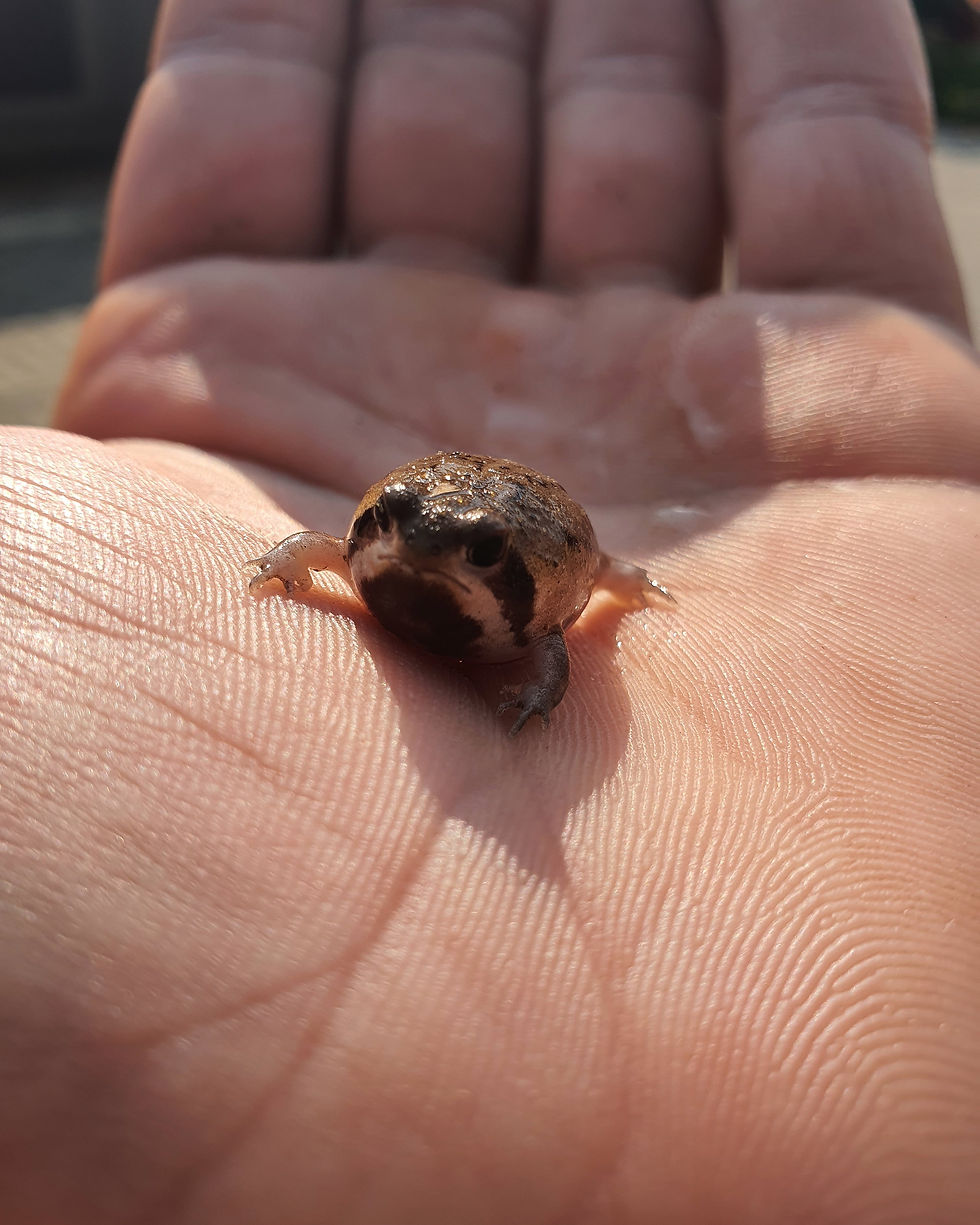Exploring the Whistling Rain Frog
Welcome to the captivating world of the Whistling Rain Frog, Breviceps sopranus, a unique and somewhat enigmatic creature that beckons us into the lush landscapes of Southern Africa.
Today, we journey through the dense underbrush and varied ecosystems to get a closer look at this fascinating species, exploring its distinct characteristics, habitat, behaviors, and the conservation efforts required to ensure its survival.

Unveiling the Mystery
At first glance, the B. sopranus may appear similar to its cousins, B. mossambicus and B. bagginsi, with males typically ranging in body length from 22 – 26.2 mm.
Yet, what sets the Whistling Rain Frog apart is not something you can see but rather something you can hear. Its unique advertisement call, a series of long, unpulsed, high - pitched whistles, echoes through its habitat.
These calls, varying from 0.6 to 1.98 seconds in duration, are the Frog's signature, distinguishing B. sopranus from all other Breviceps species.
A Diverse Home
The Whistling Rain Frog thrives in a mosaic of vegetation types within the forest and savanna biomes.
From the dense, herbaceous undergrowth of the Sand Forest at St Lucia and Dukuduku to the Afromontane Forest on the northern slopes of the Lebombo Mountains at Jozini, and even the sandy rhyolitic soils of the Lebombo Arid Mountain Bushveld at Mlawula Nature Reserve and Komatipoort.
Each location offers a unique backdrop for observing these frogs in their natural setting.

A Tribute to a Conservation Pioneer
The naming of Breviceps passmorei pays homage to Neville Passmore, a luminary in South African herpetology whose work in bioacoustics has left an indelible mark on the study and preservation of Frogs.
His dedication to instilling a lifelong fascination with these creatures among his students has not only advanced the field but also ensured the continuation of conservation efforts for generations to come.
Living the Rain Frog Life
Breeding season for the B. sopranus spans from early October to early January, marked by choruses that can arise at any moment during light to heavy rain.
These calling males, often found in elevated positions on fallen branches or small plants - or even calling from the soil surface - create a symphony in the rain, ceasing only when the precipitation does.
Conservation
Despite being a recent discovery, the B. sopranus already faces challenges. Classified as “Data Deficient”, the lack of comprehensive information on its distribution and biology hampers accurate conservation status assessment.
Its known habitats, such as the Hluhluwe and Mkuze Game Reserves and the Greater St Lucia Wetland National Park, along with the Mlawula Nature Reserve, are islands of sanctuary amidst threats of habitat destruction due to agriculture and deforestation.
Urgent calls for the collection of distribution, life history, and ecological data echo the Frog's own calls for a mate, emphasizing the need for concerted conservation efforts to ensure the survival of this unique species.

Beyond the Call
While currently known only from specific regions, the Whistling Rain Frog's distinctive call, often mistaken for an insect or bird, suggests there may be more to learn about its range.
Its presence, recorded from the south in Mtunzini, KwaZulu - Natal, stretching northward along the Lebombo Mountains to Komatipoort, hints at a wider distribution that remains to be fully understood.
Conclusion
The song of the Whistling Rain Frog is more than just a call into the wild - it's a reminder of the intricate beauty and the fragility of our natural world.
As we delve into the lives of these remarkable creatures, we're reminded of the importance of listening to and preserving the natural symphonies that play out in our planet's most precious ecosystems.
About The Author
Kyle Grobler is a passionate environmentalist and esteemed field guide from Potchefstroom. With an unparalleled love for nature, he boasts a vast collection of over 40,000 photos, illustrating his particular affinity for birds.
Known by many as the embodiment of a true bushman, Kyle has ventured through various South African game reserves and frequently explores the Vaal River's hidden treasures. As a new contributor to the Potch Gazette's environmental page, readers can anticipate immersive tales of Potchefstroom's natural wonders through Kyle's expert lens.
To see more from Kyle and his bush experiences you can also view his Youtube Channel here: Kyle Grobler Photography
More Amphibian Stories
For more about amphibians you can click on the link below, they play a major role in nature as we see it today and are worth conserving.
The Cape Platanna: Click Here
The Painted Reed Frog: Click Here
Natal Tree Frog: Click Here
Ice Frog: Click Here
Comments, Suggestions, Stories
Please do feel free to add any comments in our comments section below, we always love to hear about great birds and experiences from our readers.



.jpeg)
